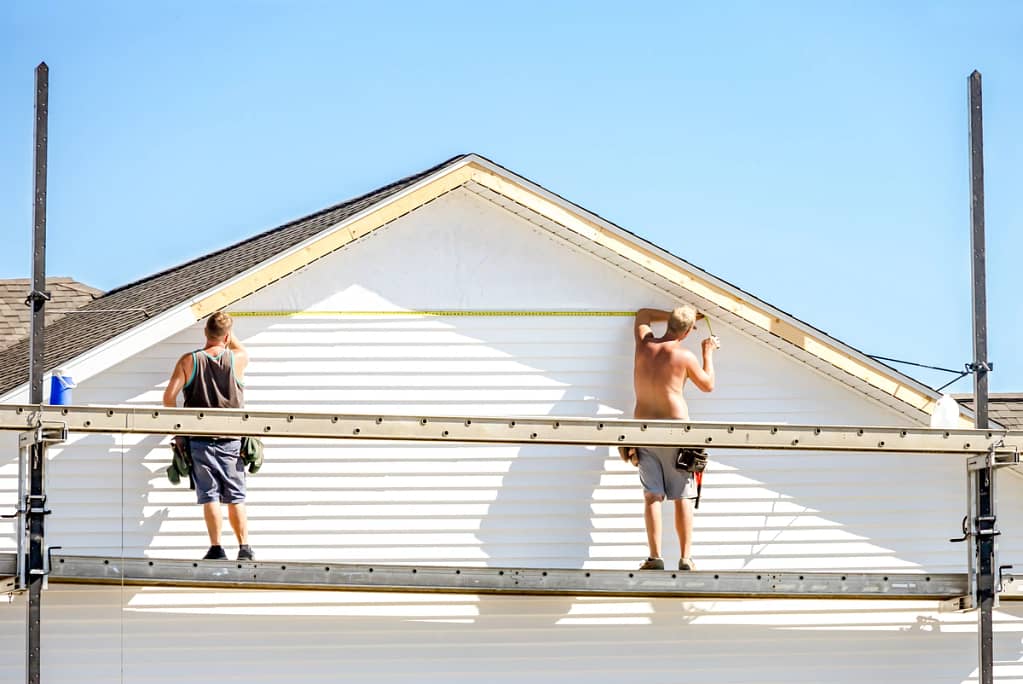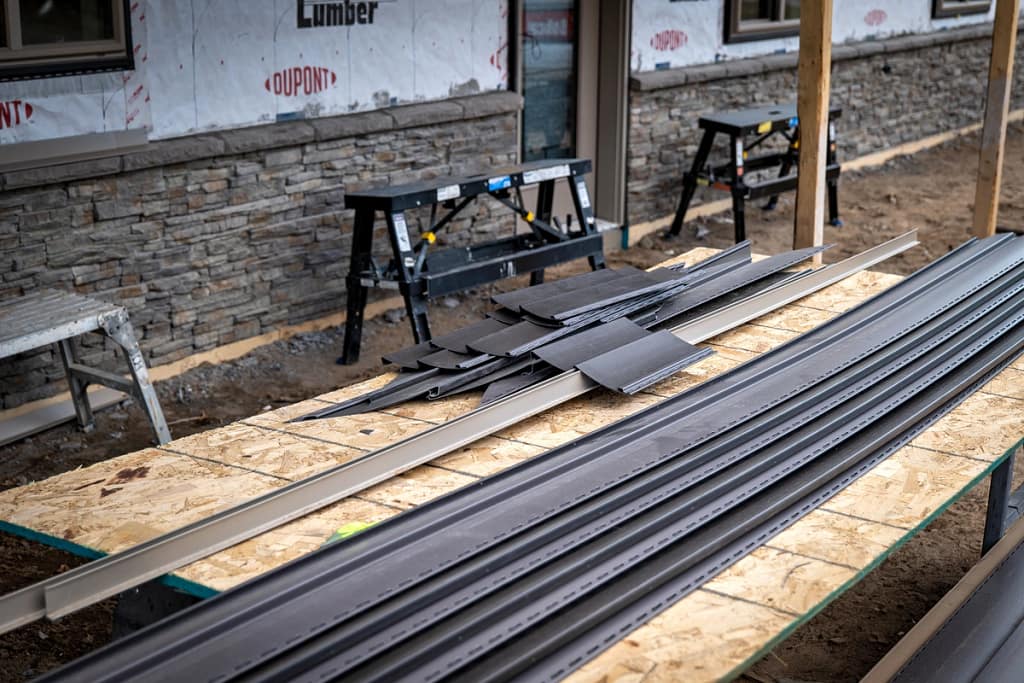How To Cut Vinyl Siding (Step By Step)
Are you a DIY enthusiast? Are you someone who insists on fixing your own leaky faucets, installing your own drywall, and improving your home exterior? Then we’re not surprised you’ve found this blog!
You’re likely wondering how to cut vinyl siding so you can make your own exterior repairs. While it’s always recommended to have a professional contractor install new siding, you can attempt small repairs yourself.
(Just keep in mind that doing so may void your warranty!)
There are three main methods for cutting vinyl siding — take a look below!
How to Cut Vinyl Siding
There are several methods for cutting vinyl siding to choose from depending on the tools on hand. Whether you own a saw, prefer tin snips, or want to try your hand at using a utility knife, we’ll walk you through all of them.
Method #1: Short Vertical Cuts With a Circular Saw 🪚

Using a circular saw to make short vertical cuts is perhaps the most popular way to cut vinyl siding. You’ll need to gather the following materials before getting started:
- Circular saw
- Fine-tooth plywood saw blade
- Safety goggles
- Straight edge
- Pencil
Step 1: Mount the Fine-Finish Blade in the Saw
It’s very important to use a fine-tooth or fine-finish saw blade for this project. Other blades may not give you the clean cut that a fine-tooth saw blade will. You can purchase these blades at your local home improvement store.
Mount the fine-finish blade so that it’s backward in the circular saw. The points on the blade’s teeth should point in the opposite direction that the blade spins.
Step 2: Measure and Mark Where You Want to Cut
Measure what size siding piece you’ll need to make the repair. Then, use your straight edge and pencil to mark where you’ll want to cut on the vinyl siding.
If your siding is a dark color, you can mark the line on a piece of masking tape or use chalk so that you can see where to cut.
Step 3: Position the Siding
If you don’t own a fancy table saw, you’ll need to correctly position the siding by laying it on a flat table and ensuring the spot you’re cutting hangs off the edge. You can also lay two wood planks on the table so that the siding is elevated. Just be sure there isn’t anything underneath where you’re cutting, or you’ll also cut into that material!
Step 4: Cut Along the Line
Put on your safety goggles, turn on the saw, and carefully cut along the line you drew. Push the saw at a firm and steady pace to get the cleanest cut possible. Use your free hand to hold down the other side of the vinyl siding, so it doesn’t shift during the cut.
Method #2: Long Vertical Cuts With Tin Snips ✂️
We’ve covered making short vertical cuts, but what about longer vertical cuts? The best method for this project is to use tin snips.
What you’ll need:
- Tin snips
- Safety goggles
- Measuring tape
- Pencil
- Straight edge
Step 1: Measure How Much Siding You Need

Grab your measuring tape and dictate the size of the siding piece you’ll need. Then, compare that measurement to the piece of siding you have in front of you. You can do this by following this simple math formula:
- Measure the length of the section of the wall that needs covering.
- Subtract that amount from the length of the piece of siding you have.
- The result is how much you’ll need to cut off.
Step 2: Mark the Line You Need to Cut
Take your measurements and mark the line you want to cut vertically on the siding with a straight edge and pencil. A carpenter’s square is one of the best choices for a straight edge.
Step 3: Cut Along the Line With Tin Snips
Prepare to cut the siding by holding it steady with your non-dominant hand. Hold it near your pencil line to avoid shifting it during the cut.
Put on your safety goggles and use your tin snips to cut along the marked line. Avoid closing the blades all the way as you cut to ensure a cleaner result. Cut along the entire piece, and repeat as necessary.
Method #3: Horizontal Cuts With a Utility Knife 🔪

Lastly, we’re covering horizontal cuts. This method follows similar steps as the ones above.
You’ll need:
- Utility knife
- Measuring tape
- Safety goggles
- Pencil
- Straight edge
Step 1: Measure the Piece You Need to Cut
As with the other methods, you’ll need to measure your wall and then see how much siding you need to cut off. Measure the height of the wall section that needs covering, then subtract that amount from the height of your siding.
Step 2: Mark Where to Cut on the Siding
Use your straight edge and pencil to mark a line that accurately reflects your measurements. The line should run horizontally across the entire length of the siding piece.
Step 3: Properly Position the Siding
It’s important to work on a totally flat surface so that the siding doesn’t shift around, causing an uneven cut. Lay the vinyl siding on a flat table or workbench before starting the cut.
Step 4: Score the Line and Snap It
Wear your safety goggles and use your utility knife to score the line you marked. Be careful to remain on the pencil line the entire time. No need to cut all the way through the siding— simply score it with the utility knife.
After you’ve scored the entire line, use both hands to snap the siding in half along the line. Place a firm hand on each side of the scored line and bend the siding until it breaks along the line. If it doesn’t break, you can score the line again with the utility knife and try again.
Ensure a Successful Siding Repair With the Pros
It’s important to go slow and steady throughout the entirety of your DIY siding repair. One simple slip-up can cause more problems for your home’s exterior and could even void your warranty on any products used.
The best way to ensure a proper siding repair or replacement is to hire a professional siding contractor.
Here at ARCH Exteriors, our team is highly qualified and eager to help homeowners just like you with their siding issues. Give our crew a call to set up a consultation!




